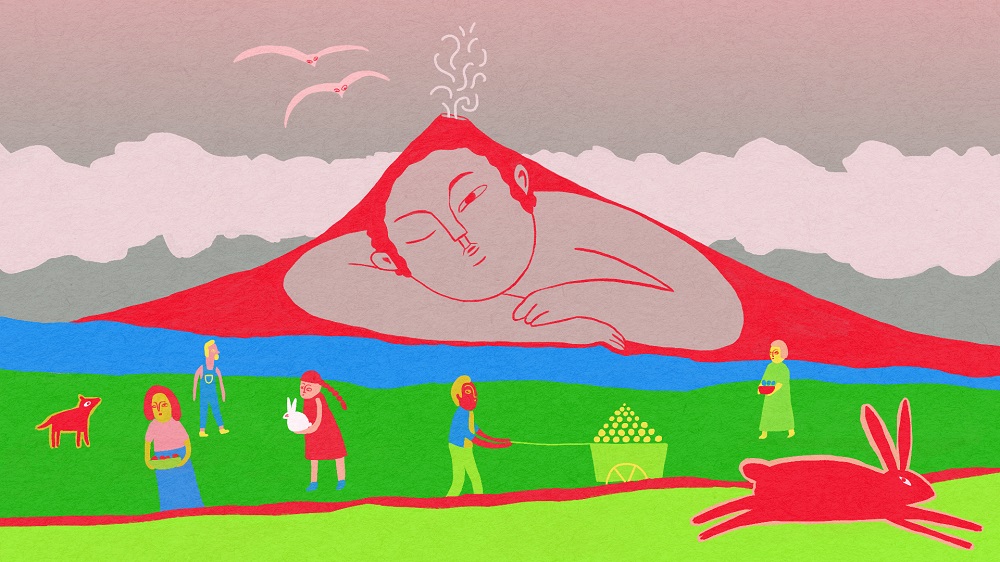By Adriana Alves
We can’t always predict nature
*
Since September 19, images of the Cumbre Vieja volcano, on the Spanish island of La Palma, in the Canary Islands, have grabbed the news. The sight of the glowing river descending at the rhythm of its wickedness astounded everyone, both scholars and non-scientists, afflicting the inhabitants.
After half a century of sleep, Cumbre Vieja has woken up angry and his lava now covers four square kilometers. The arrival of the tongue of fire on the coast ignited the alert for the possibility of the release of toxic gases resulting from the sudden cooling of lava colliding with the sea.
But how does an extinct volcano erupt without giving any evidence? Why did the authorities not previously evacuate the houses on the lava road? Why was it not possible to prevent the destruction of about a thousand buildings in the surrounding areas?
Similar questions, differing only in the location of the phenomenon, have been sought for decades, and geology already has satisfactory answers for any dormant but still active terrestrial volcano. In January 2021, researchers of different nationalities signed the text In the journal Scientific Reports, she warned of an imminent outbreak of the smaller side of the island, Cumbre Nueva. The work, using high-resolution radar data and innovative image processing and interpretation technology, highlighted the anomalous increase in volcanic building, one of the main signs of inactive volcanoes returning to life.
The unusual growth results from the injection of a large volume of magma from deep in the Earth’s mantle, a hot mass laden with volatile species, particularly water, carbon dioxide and sulfur dioxide. Just to give you an idea, the volcano has expelled about 250,000 tons of sulfur since the first day of its eruption… The smell in the surroundings shouldn’t be pleasant, but the irritation to the eyes and airways should be more annoying.
Volcanoes become dormant when magma crystallizes from the reservoir that feeds them, preventing the lava from moving. The arrival of new magma pulses “rejuvenates” the reservoir by dissolving a portion of these crystals, allowing the system to flow again.
The excessive pressure caused by the combined effect of the volume of newly arrived magma and the expulsion of volatile species from these new pulsations (more or less than what happens when the soft drink bottle cap is opened) causes the structure to “swell”, causing weak areas of the building to fracture and the consequent from an eruption. This whole process is accompanied by a radical change in the composition and volume of gases emitted by the volcano. This change, adding to the increase in the seismic record, is signs of the arrival of new magma pulses, which could lead to volcanic eruptions.
In the case of the La Palma volcanic system, all of these signs were present, and what prevented the building’s conservation plan from succeeding was the unpredictability of natural phenomena. The scientists were surprised by the migration of the main volcanic channel which included a change in the lava exit point, which was expected in the Cumbre Nueva area – the bulge of the building was most noticeable earlier in the year. However, the eruption was moved to the south, and lava covered the ancient volcanic deposits of Cumbre Vieja. Although nature always takes the easy way out, it is not always straightforward, despite advances in technology.
These developments also do not mean greater chances of changing the course of the lava, because “successful” examples are absurd and questionable. In Italy, a trench was built around Mount Etna around 1670 with the aim of redirecting the lava flow. The initiative worked conditionally, as the lava was diverted to a neighboring community. Several skirmishes and some deaths later, the trench proved insufficient to accommodate the increasing volume of lava and both locations were affected by the eruption.
If we do not have the power to influence the internal dynamics of the Earth, we also will not have effective means to prevent its power from bending us under the weight of our insignificance.
*
Adriana Alves is a geologist and professor at the University of the South Pacific.
Participation In the Serrapilheira newsletter to follow more news from the institute and the Ciência Fundamental blog.

“Hardcore beer fanatic. Falls down a lot. Professional coffee fan. Music ninja.”






More Stories
The law allows children and adolescents to visit parents in the hospital.
Scientists pave the way for the emergence of a new element in the periodic table | World and Science
Can dengue cause hair loss? Expert explains how the disease affects hair